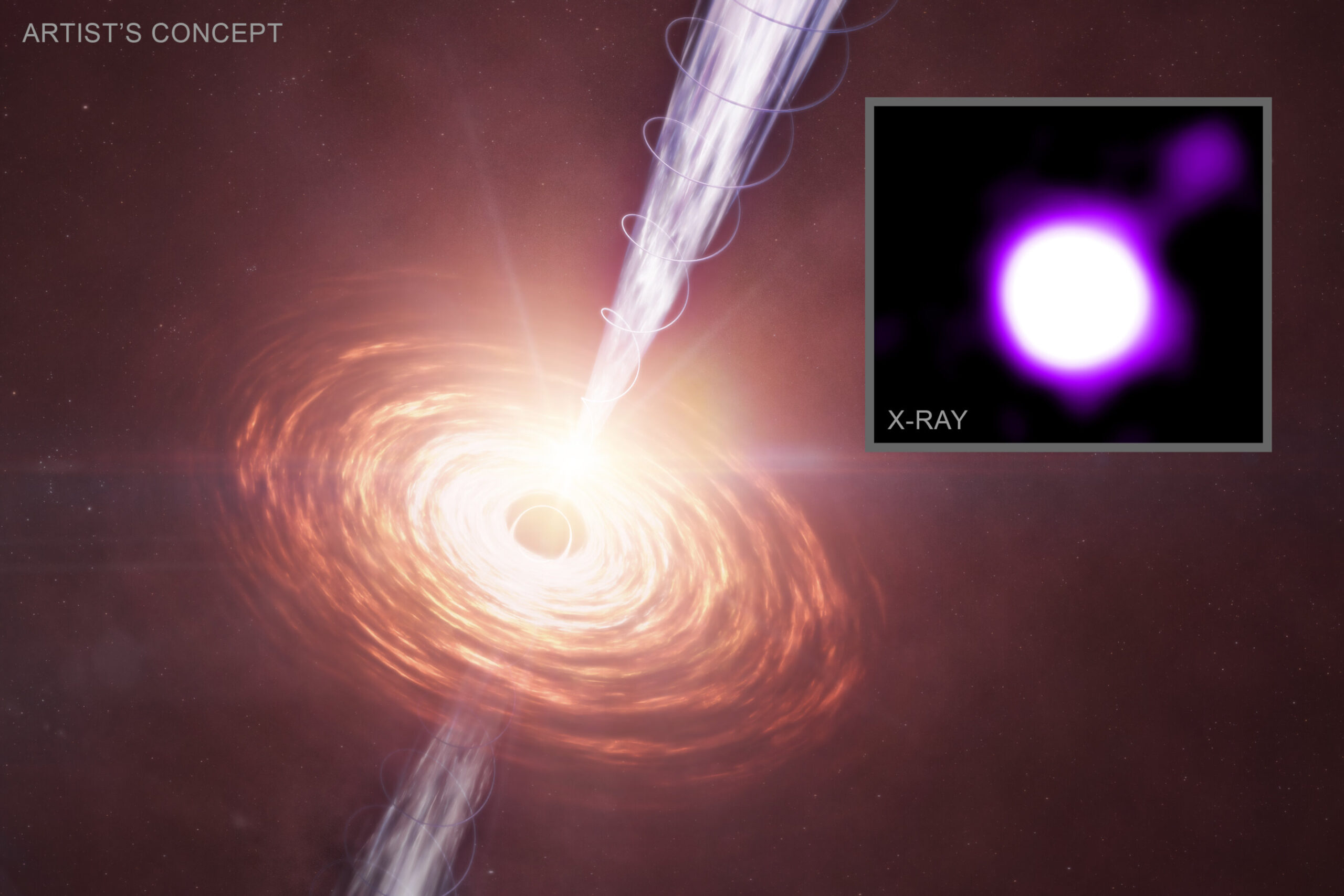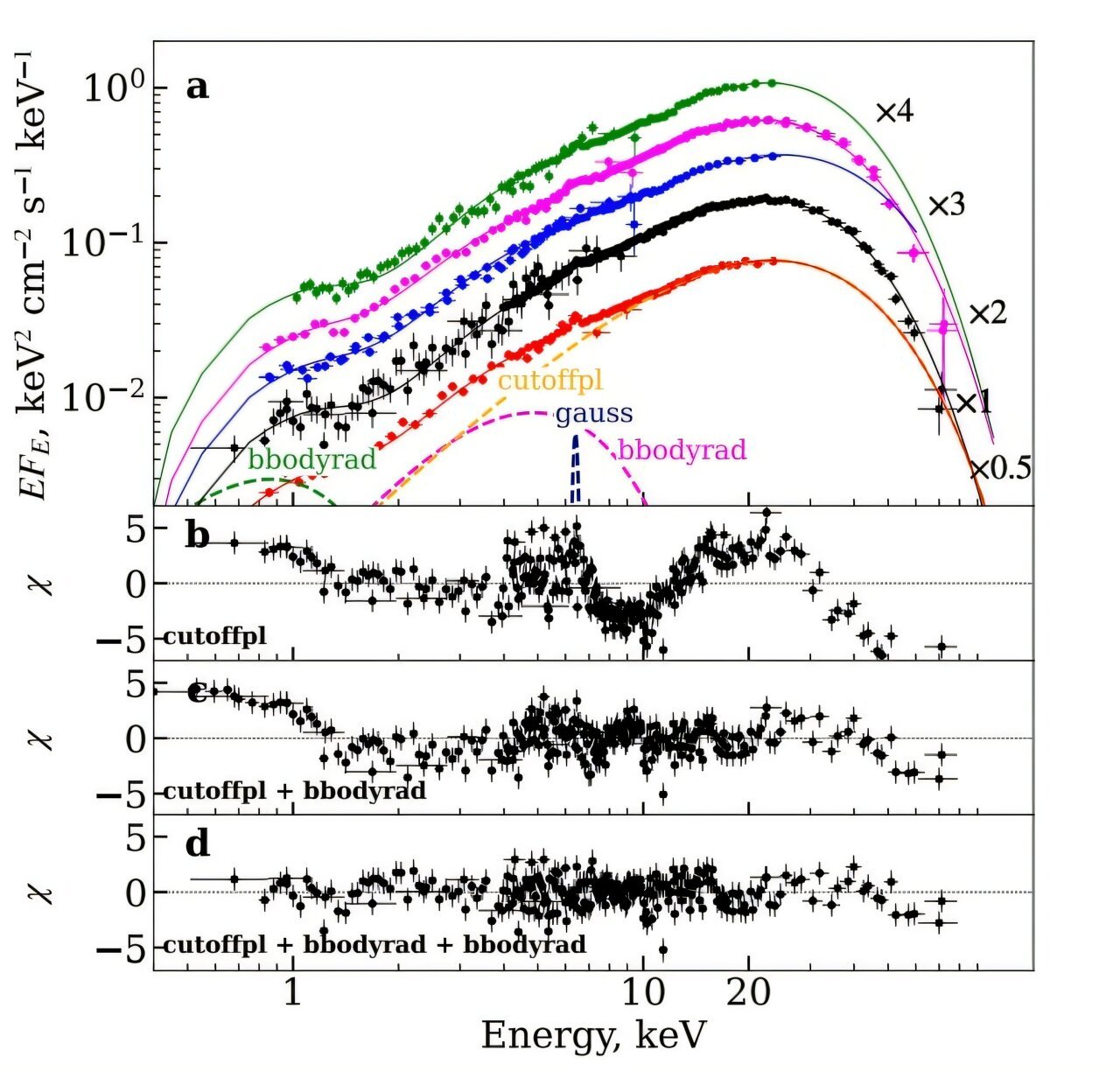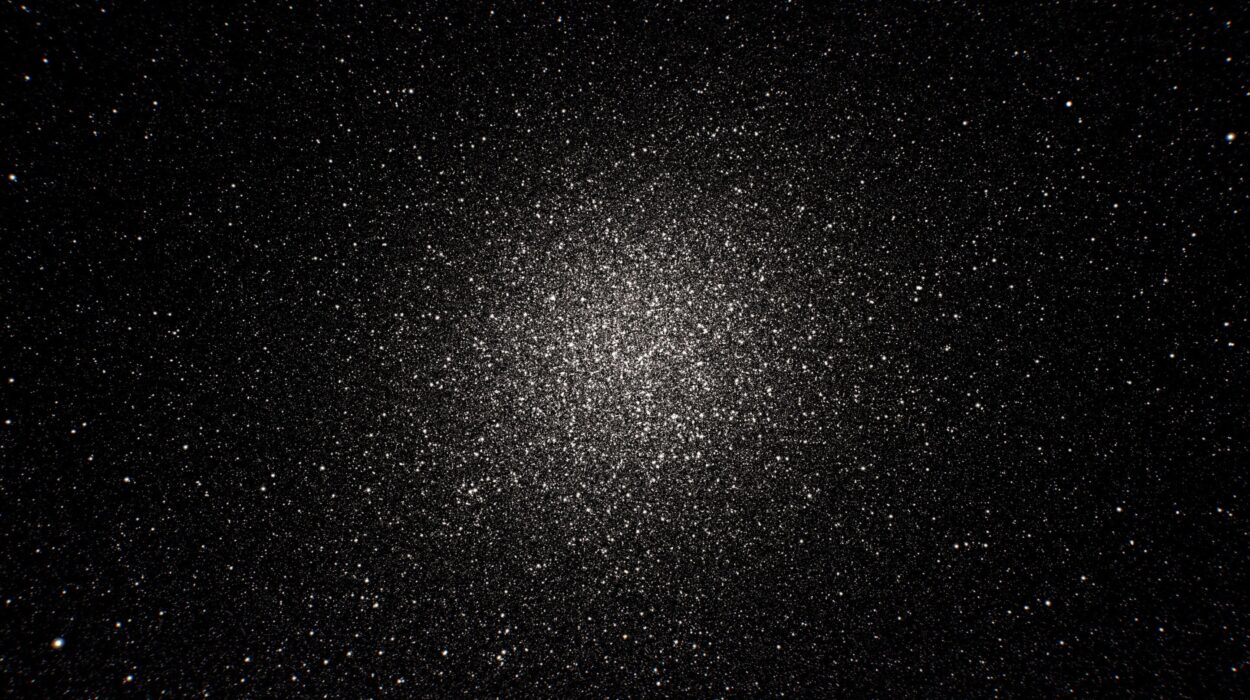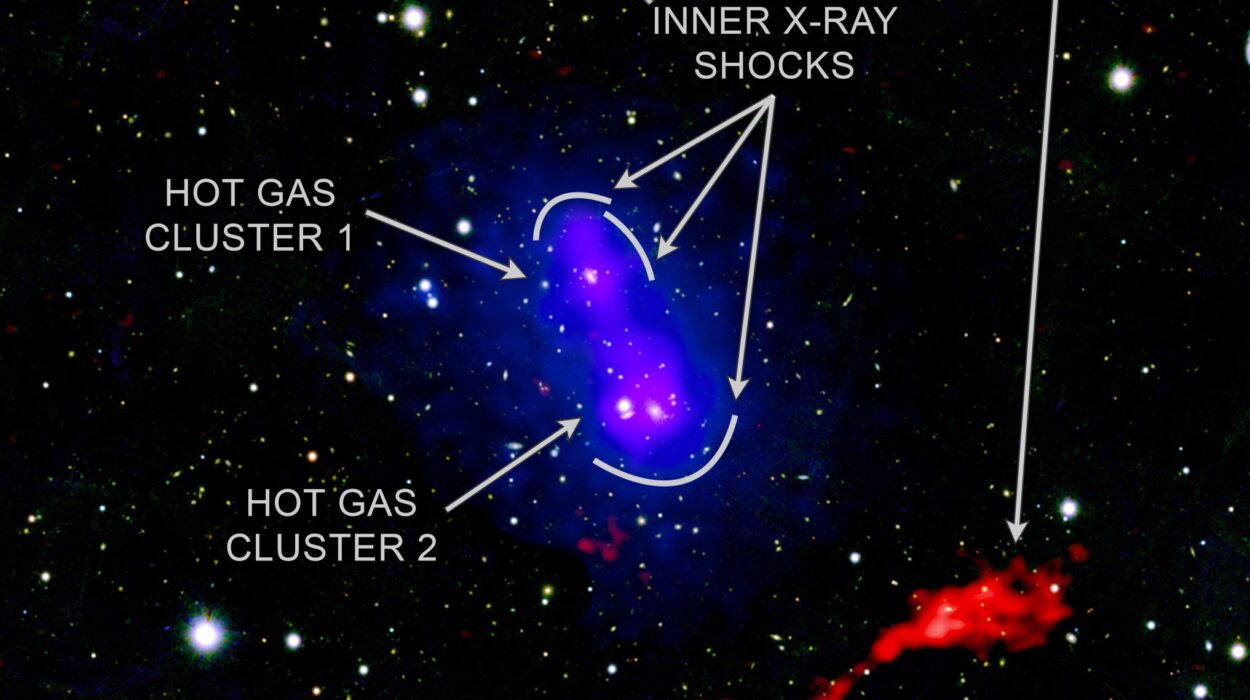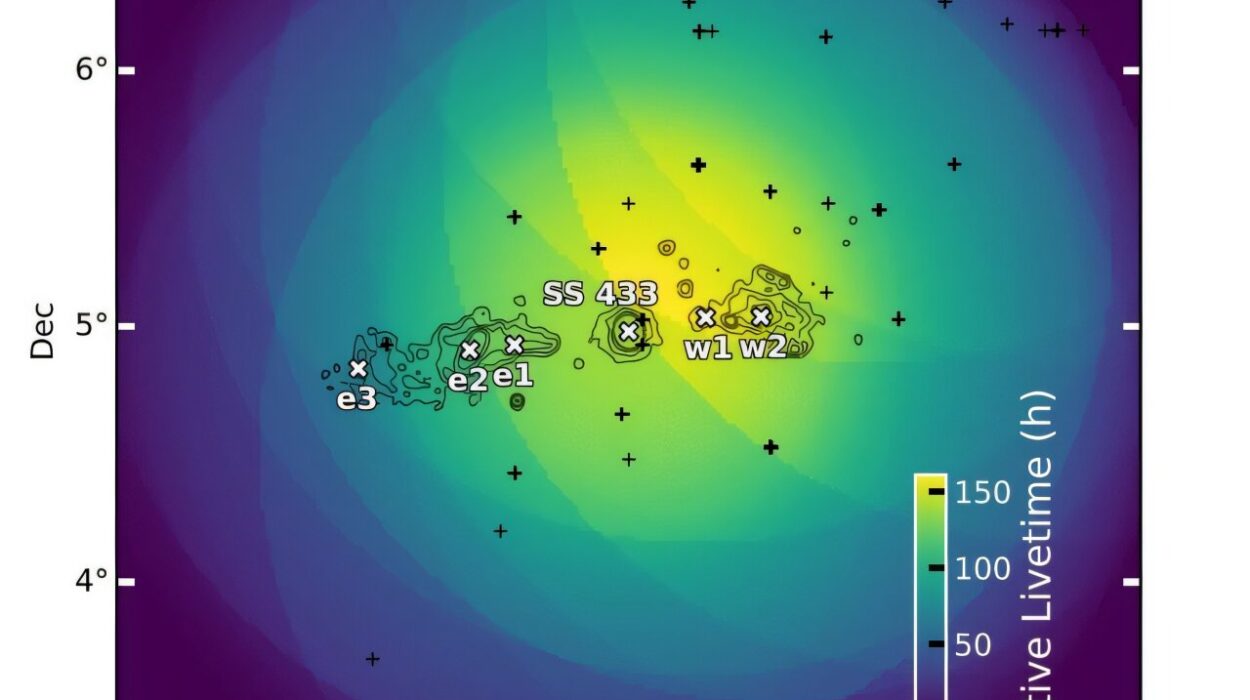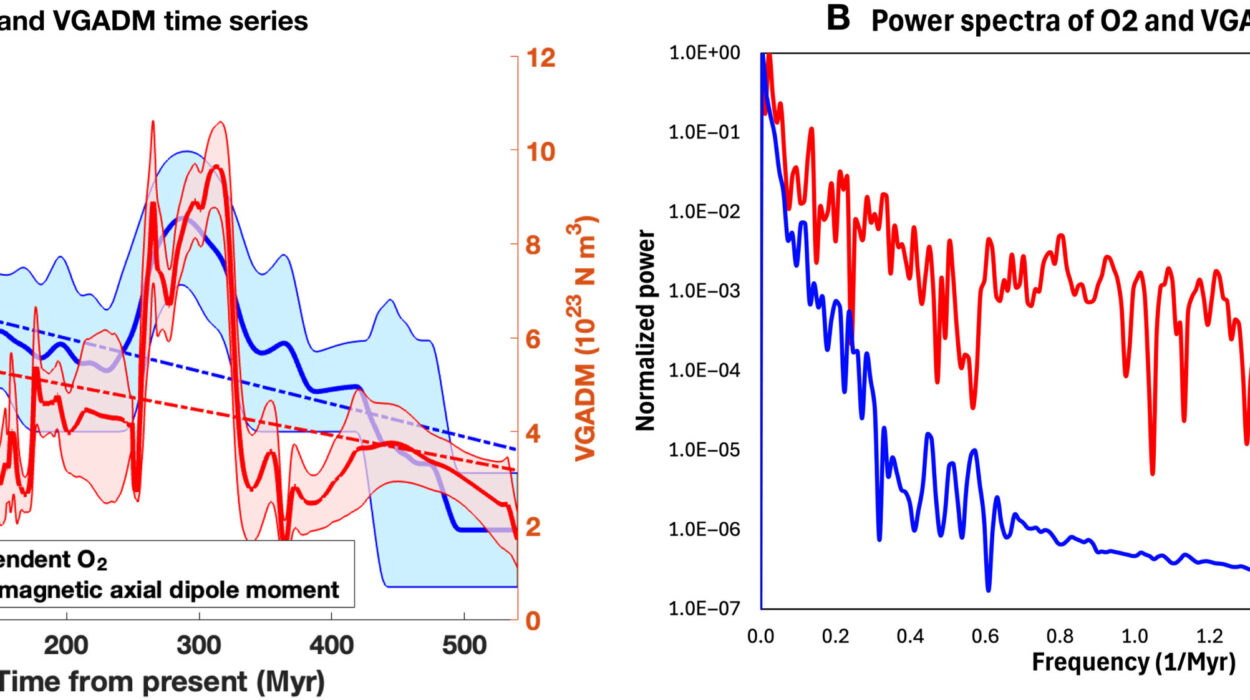In a corner of the ancient universe, where galaxies were just beginning to bloom and black holes grew hungrier by the day, something extraordinary happened. A titanic jet of energy—fired from the heart of a supermassive black hole—has traveled across the cosmos for more than 11 billion years, and now, at last, its signal has reached us.
Thanks to the keen X-ray vision of NASA’s Chandra X-ray Observatory and the powerful ears of the Karl G. Jansky Very Large Array (VLA), astronomers have captured one of the earliest and most powerful black hole jets ever seen. What’s more, this cosmic jet wasn’t just visible—it was blazing bright in X-rays, illuminated by none other than the faded afterglow of the Big Bang itself.
The findings, unveiled at the 246th meeting of the American Astronomical Society (AAS 2025) and published in The Astrophysical Journal, open a rare window into a time known as “cosmic noon,” about 3 billion years after the birth of the universe—a period when galaxies and black holes were undergoing a furious growth spurt.
The Jet That Time Couldn’t Hide
At first glance, it may seem impossible that something so distant could ever be observed. After all, the black hole responsible—located 11.6 billion light-years from Earth—is buried deep in time. And yet, its jet cuts through that darkness with surprising clarity.
This is not your everyday beam of energy. The jet, stretching over 300,000 light-years, is like a cosmic blowtorch, firing particles at speeds close to that of light. The electrons in this stream are not just moving fast; they are colliding with the cosmic microwave background (CMB)—the ghostly radiation left behind by the Big Bang, still echoing faintly through space.
When these high-speed particles smash into the CMB’s photons, they turbocharge them, transforming their low-energy microwave signature into powerful X-rays. This collision of time and energy gives us a breathtaking opportunity: the chance to see what the early universe looked like in high resolution.
“These jets are so distant that we’re essentially looking back in time,” said Jaya Maithil, lead researcher from the Center for Astrophysics | Harvard & Smithsonian. “And yet, they shine brightly enough in X-rays that we can not only detect them but also measure how they’re moving through space.”
A Tale of Two Black Holes
The team identified two different black holes, each unleashing their own extraordinary jets. Designated J1405+0415 and J1610+1811, these objects are racing through the universe with a speed and power that defies imagination.
In one case, particles in the jet are barreling forward at 95% to 99% the speed of light. In the other, they’re not far behind, clocking in at 92% to 98%. These are not mere cosmic curiosities—they are colossal engines of energy, shaping galaxies and stirring the fabric of spacetime.
The jet from J1610+1811, in particular, is a powerhouse. It’s carrying roughly half as much energy as the searing light emitted from gas orbiting the black hole itself. That’s like watching a volcanic eruption rival the brightness of the sun—except it’s happening at the edge of the visible universe.
Even more remarkable is how astronomers were able to spot these jets. They’re nestled close to quasars, the brilliant beacons formed by supermassive black holes devouring matter at extraordinary rates. Normally, the blazing light of a quasar would drown out the jet. But Chandra’s unmatched X-ray resolution, combined with the time-thickened glow of the early universe, allowed the team to separate the beam from the background.
The Cosmic Sleight of Hand: Seeing What’s Not There
There’s a strange twist when it comes to spotting these jets. Thanks to Einstein’s theory of special relativity, jets that move toward Earth appear far brighter than those angled away. It’s an optical illusion born from the extreme physics of near-light speeds.
This means our cosmic jet catalog is biased—full of objects that happen to be facing us. That bias has long challenged astronomers trying to calculate a jet’s true speed and angle of emission.
But the team developed a breakthrough: a statistical model that corrects for this bias, separating the deceptive brightness effects from the actual movement and orientation of the jets. The model simulates 10,000 possibilities using physics-based relationships between speed and angle, combined with a new probability distribution that mimics how jets are more likely to be detected if they’re pointed toward us.
With this method, the researchers found that the jet from J1405+0415 is likely pointed just 9 degrees from Earth’s line of sight. For J1610+1811, the angle is about 11 degrees—still nearly aimed right at us, but now measurable with confidence.
A Glimpse into the Furnace of Cosmic Evolution
So why does all this matter?
Because these jets are not just pretty light shows. They are feedback mechanisms that sculpt the galaxies they inhabit. As they plow through space, they heat up interstellar gas, trigger new waves of star formation—or suppress it—and influence the fate of everything around them.
What we’re witnessing is not just the story of a black hole, but the story of galaxy formation, told in beams of energy and framed by the background radiation of the Big Bang. These jets, born from chaos, carry within them the blueprints of cosmic architecture.
“This discovery lets us peer into a time when black holes were dramatically shaping the young universe,” Maithil explained. “By understanding these ancient jets, we learn how the cosmos evolved into what we see today.”
The Universe Still Speaks
As our telescopes reach further and our models grow sharper, the universe continues to reveal its secrets. The discovery of these powerful black hole jets—blazing from the ancient past, still shaped by the embers of the Big Bang—is more than a scientific triumph. It’s a reminder of just how alive the cosmos remains.
Every photon that travels across billions of years, every collision between particle and light, tells a story. And now, thanks to the tools we’ve built and the minds bold enough to interpret them, those stories are no longer silent.
In the dance between gravity and light, speed and time, we find a deeper understanding not just of where we are—but how we came to be.
These results were presented by Jaya Maithil (Center for Astrophysics | Harvard & Smithsonian) at the 246th meeting of the American Astronomical Society (AAS 2025) in Anchorage, AK, and are also published in The Astrophysical Journal.
Reference: Jaya Maithil et al, Investigating the Emission Mechanism in the Spatially Resolved Jets of Two z ≈ 3 Radio-loud Quasars, The Astrophysical Journal (2025). DOI: 10.3847/1538-4357/adccc1
